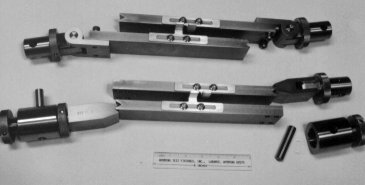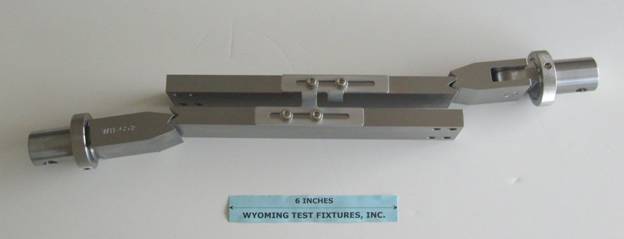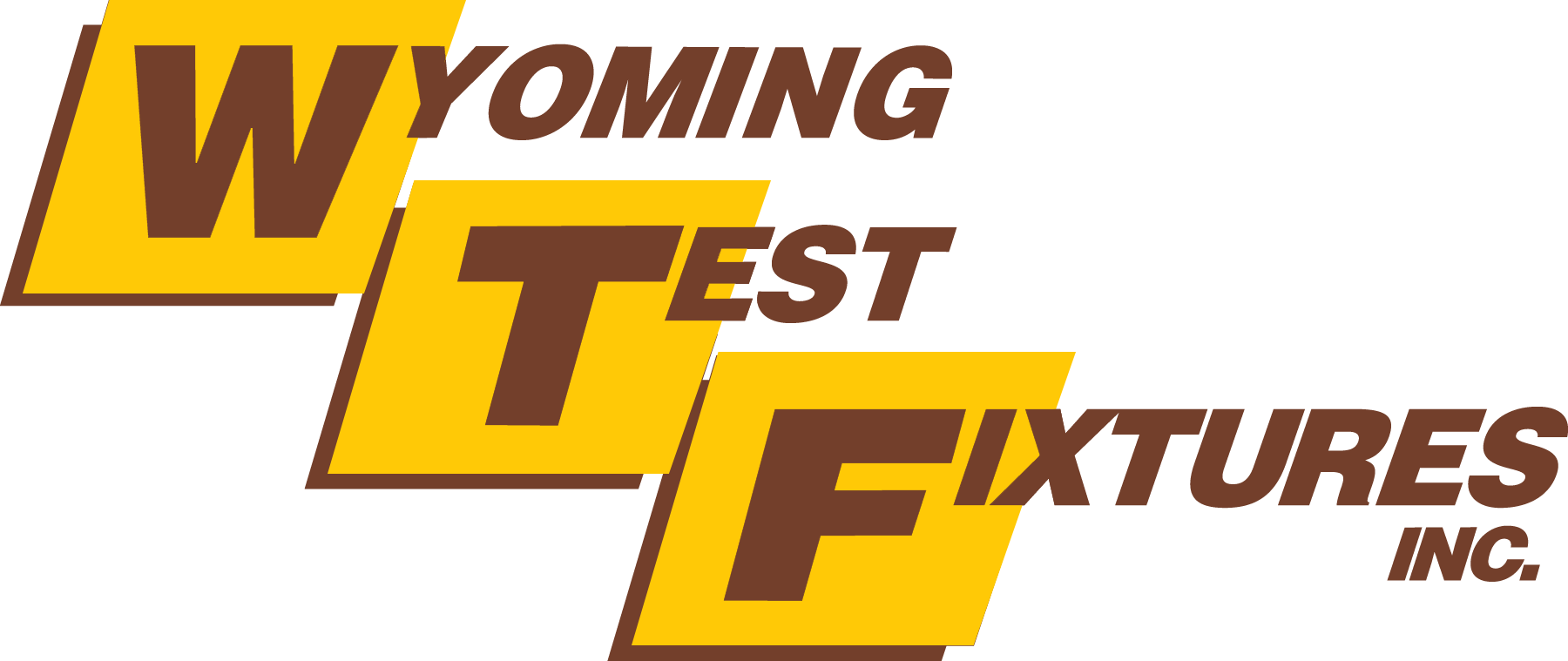Special Sandwich Panel Shear Test Fixture (ASTM C273)
Model No. WTF-CS (Stainless Steel)

Fig. 1: Fixture in tension (top) and compression (bottom) loading configurations (sown with optional adapters and clips for extensometer mounting) .
This fixture performs the same functions as Model WTF-TS (see Section A-7 of this web site), while incorporating the separate tension and compression loading mode configurations indicated in ASTM Standard C273 (Reference 1). It will be noted that the tension loading mode is essentially the same as that of the Model WTF-TS fixture, but utilizes the same notched loading plates as the compression loading mode.
The bonding plates are designed so that, whether used in the tension or the compression loading mode, both surfaces can be used. This doubles the life of the bonding plates.
In general there is little purpose in selecting this fixture since our Model WTF-TS can also be loaded in either tension and compression, and is less expensive. However there are situations where the use of the specific compression configuration shown in Fig. 1 is specified.
Thus, the fixture shown above can also be supplied with just the compression loading fittings, if desired. For example, only the compression loading mode is specified in the German Standard DIN 53 294 (Reference 2). Such a fixture is as shown below in Fig. 2. Standard 1.25 in. diameter male end fittings, with ½ in. diameter cross pin holes (Instron Type Dm) are provided for attachment to the testing machine.

Fig. 2: Model WTF-CS Shown in Compression Loading Mode Only.
The specimen size is dictated by the thickness of the sandwich being tested, the specimen width to be not less than twice this thickness, and the length not less than 12 times this thickness, "unless otherwise agreed to." The steel plates shown in the photograph are 2 in wide, 0.63 in thick, and 10 in long. Any other sizes can be supplied upon request.
The sandwich panel or core material specimen to be tested is bonded directly to the loading plates, three pairs of which are included with the fixture. Additional pairs can be supplied, at a nominal additional cost.
Perforated plates (for enhancing absorption rates during moisture conditioning), as well as plates containing fluid fittings (for pressurizing the core while applying the shear loading) can also be supplied upon request.
An ASTM standard also exists for conducting shear fatigue tests of sandwich core materials (Reference 3). This standard, ASTM C394, uses the same test fixture as the present ASTM C273 standard. However, the core material is to be tested without face sheets. That is, the core is bonded directly to the bonding plates.
Sources of Additional Information:
1) ASTM Standard C273-11 (2011), "Shear Properties in Flatwise Plane of Flat Sandwich Constructions or Sandwich Cores," American Society for Testing and Materials, West Conshohocken, PA (first issued in 1951).
2) DIN Standard 53 294, "Testing of Sandwiches: Shear Test in Flatwise Plane," Deutsches Institutfur Normung, Koln, February 1982.
3) ASTM Standard C394-12 (2012), "Shear Fatigue of Sandwich Materials," American Society for Testing and Materials, West Conshohocken, PA (first issued in 1957).

